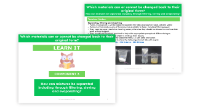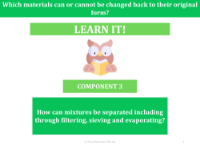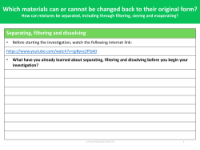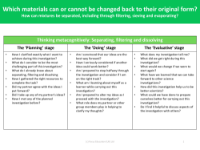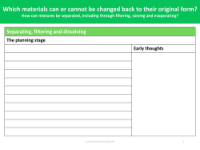How can mixtures be separated including through filtering, sieving and evaporating? - Teacher notes
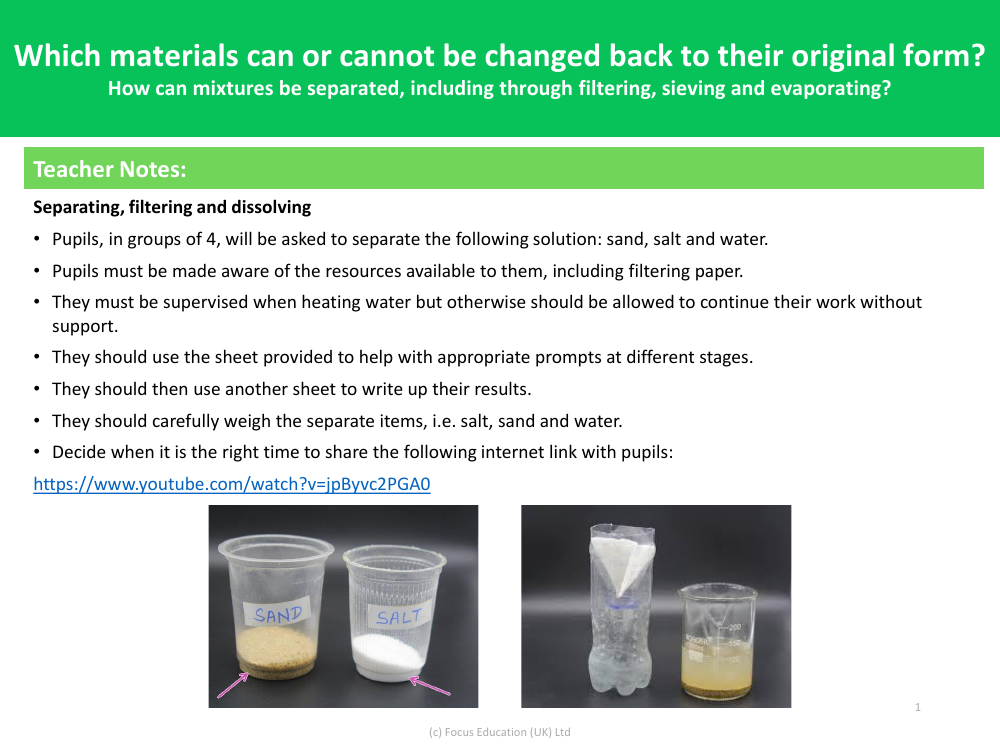
Science Resource Description
When teaching students about the separation of mixtures, a practical lesson can be highly effective. In this activity, groups of four students will tackle the challenge of separating a mixture containing sand, salt, and water. To accomplish this, they will have access to various resources, one of which is filtering paper, essential for the separation process. The students must be informed about the available materials and how to use them safely, particularly when it comes to heating water during the evaporation stage.
The lesson is structured to encourage independence, with pupils working on their own, though under supervision for safety during certain steps like heating. They will be provided with a guidance sheet that offers prompts to assist them through the different stages of the experiment. Following the practical work, students will use a separate sheet to record their findings. Precision is important, and they will be instructed to carefully weigh the separated components—salt, sand, and water—to quantify their results. As an additional resource, the teacher may choose an appropriate time to share an educational video link that further explains the concepts of filtering, sieving, and evaporating, and how these processes can be used to separate mixtures. This hands-on approach not only helps students understand the physical separation techniques but also encourages them to consider which materials can be reverted to their original form after being mixed.
